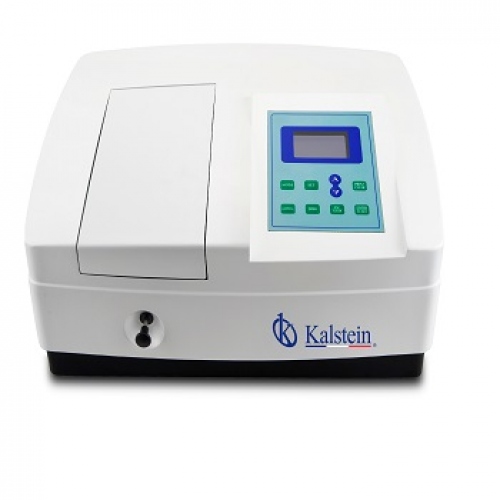Spectrophotometry is an analytical technique that allows determining the concentration of a compound in solution. It is based on the principle that molecules absorb electromagnetic radiation and in turn that the amount of light absorbed depends linearly on the concentration. A spectrophotometer is used to measure the amount of light absorbed by a solution.
That is, spectrophotometry refers to the measurement of relative amounts of light absorbed by a sample, as a function of wavelength. It is characterized by its accuracy, sensitivity and its applicability to molecules of different nature (pollutants, biomolecules, among others) and aggregation state (solid, liquid, gas).
Principles of spectrophotometry
Spectrophotometry is based on the principle that each component of the solution has its characteristic light absorption pattern. By comparing the wavelength and intensity of the maximum light absorption of a sample against standard solutions or known concentrations, it is possible to determine the identity and concentration of dissolved components in the sample (test solution).
Spectrophotometry measures the amount of discrete wavelengths of UV or visible light that are absorbed or transmitted through a sample compared to a reference or blank sample. This property is influenced by the composition of the sample, potentially providing information about what is in the sample and in what concentration.
Applications of spectrophotometry
Spectrophotometry is an analytical laboratory method that has countless applications and advantages such as: it is a fast, accurate, versatile, easy to use and low cost technique. Spectrophotometers are key instruments in spectrophotometry and are highly accurate and versatile equipment, so they are considered essential devices in any laboratory.
Spectrophotometry is used in various applications, such as quantitative and qualitative analysis of unknown solutions in a research laboratory, standardization of colors of various materials, such as plastics and paints, detection of levels of contamination in air and water, and determination of trace impurities in food and reagents. It is very useful today in applications in different areas of science ranging from the analysis of a bacterial culture, identification of drugs and the checks and quantification of the purity of nucleic acid, to quality control in the beverage industry and chemical research.
What is a spectrophotometer?
A spectrophotometer is a laboratory equipment used to measure the absorbance of a sample, as a function of the wavelength of an electromagnetic radiation, and thus know the concentration of substances in a solution.
The importance of this equipment is that it is currently used in laboratories for the main purpose of diagnosis, taking into account the properties of light and the interaction with other substances. In general, this equipment consists of 4 main parts: a source, a monochromator, a beam splitter, a sample area and a detector. It also has optical elements such as lenses or mirrors, which transmit light throughout the entire equipment.
What does Kalstein offer you?
Kalstein is a manufacturer of medical and laboratory equipment of the highest quality and the best technology at the best PRICES in the market, so you can make your PURCHASE confidently with us, knowing that you have the service and advice of a company specialized in the field and committed to provide you with safe, economical and effective options to perform your functions in the right way.
This time we present you our VIS UV Spectrophotometer with visible ultraviolet scanning software – YR01857. This innovative equipment with cutting edge technology has the following features:
- Innovative optical design and the latest generation monochromator with high-grade flamed holographic grid ensure precision. Its integrated design ensures long-term stability and durability.
- Precision aligned detector and quality deuterium and halogen lamps improve accuracy across the UV/vis spectrum from 190 nm to near infrared 1100 nm.
- Online software upgradeability over the Internet (for standalone models)
- Complete A4 printing of graphics and result tables with popular and inexpensive printers like HP or Epson Deskjet.
- Real-time clock for date and time stamping of results.
- Large LCD display (dot matrix 320*240)
- The UV-Professional application software provides full spectrophotometer control from a computer via the built-in USB port. The following functions can be easily achieved: quantitative, kinetic, wavelength scanning, DNA/protein test and multiple wavelength test. HERE
For more information we invite you to take a look HERE


